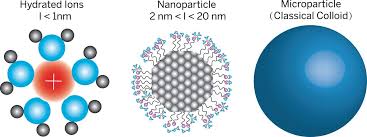The guidance Electric Electrical conductivity in nanoparticles (Nano particle) based on nano-microelectronics PhD (doctorate in educational management _)
Researcher and author: Dr. ( Afshin Rashid)
Note: The structure of electrical conductivity in nanoparticles and nanomaterials in terms of their dimensions at the nanoscale, into four categories: zero-dimensional, one-dimensional, two-dimensional and bulk three-dimensional nanomaterials. They are segmented, which can be produced by top-down or bottom-up methods. Due to their very small size, nanomaterials show special and sometimes different properties from other ordinary materials in electrical conductivity.
In general, nanomaterials have three dimensions of length, width and height. If at least one of these dimensions is at the nanotechnology scale (1-100 nanometers), it is called nanostructure. Nanostructured materials are divided into different classifications according to how many dimensions they have on the nanotechnology scale. One of these divisions is free in terms of the number of dimensions. Free dimension means a dimension that is not at the nanoscale and can have any value.There are energy structures (level or bar) of materials in line with each of the dimensions of length, width and height. In other words, each three-dimensional object has three separate energy structures in line with its three dimensions, the result of which expresses the energy structure of the whole matter. Dimensions of nanostructured materials that are at the nanoscale, thin layers that have discrete energy levels in one dimension. This means that due to the limitations of the dimensions at the nanoscale, the energy bands become discrete, and the larger the limitations (the smaller the dimensions), the greater the distance between the energy levels. Therefore, one of the main differences between different types of nanostructured materials is the number of continuous energy bands and discrete energy levels in three dimensions, which leads to many changes in their purity.
Conclusion :
Electrical conductivity structure of nanoparticles The importance of nanoscale in changing the properties and characteristics of materials in these dimensions. Properties such as strength, flexibility, electrical conductivity, magnetic properties, color, reactivity and so on. The beginning of changing the properties of a material by shrinking it depends more than anything on the type of material and the desired property.
Author: Dr. ( Afshin Rashid)




